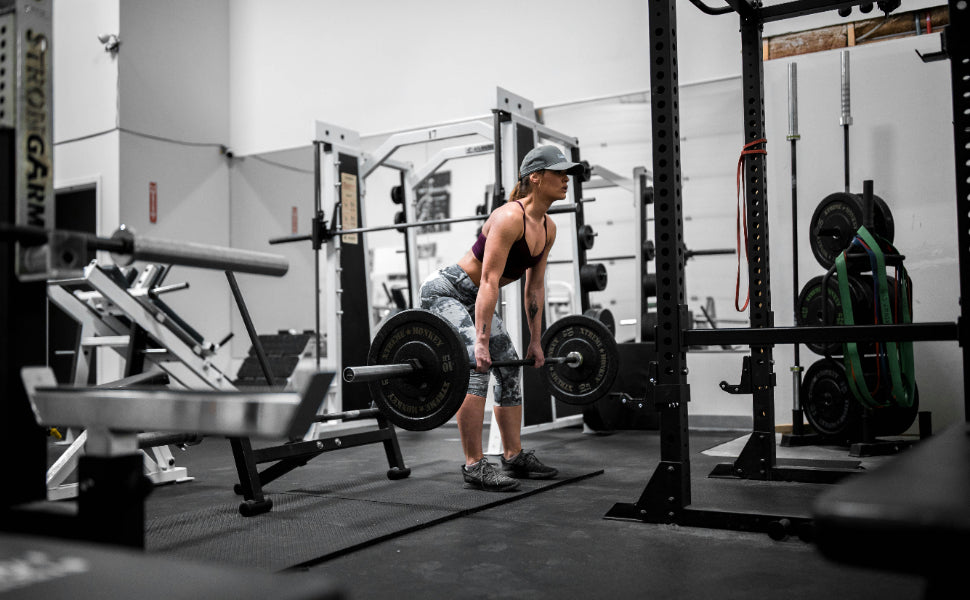How Do Knee Braces Help With Weightlifting?

Knee braces can help support and stabilize the knees during weightlifting activities. They help to avoid injuries, increase performance, and alleviate pain and suffering. This post will go over the many types of knee braces used in weightlifting, their advantages, and how to select the best knee brace for weightlifting. Before utilizing knee braces, contact with a medical practitioner and examine your unique needs and preferences.
fivalifitness.com
Types of Knee Braces for Weightlifting
There are numerous types of knee braces that can be used to support and protect the knees while weightlifting. The most popular types are:
- Knee Sleeves: Knee sleeves are constructed of neoprene or similar materials and are intended to compress and support the knee joint. They provide moderate stability and keep the joint warm, lowering the risk of damage and improving blood circulation.
- Knee wraps: When doing strenuous lifting, knee wraps—which are extended elastic bands placed around the knee joint—provide extra support. They provide a high level of stability and compression, resulting in improved power and strength. However, they should be used with caution because excessive wrapping can reduce blood flow and mobility.
- Hinged Knee Braces: These braces contain metal hinges on the sides that add support and stability to the knee joint. They are especially useful for people who have prior knee injuries or instability. Hinged knee braces allow for controlled movement while also offering stability and protection.
- Custom Knee Braces: Custom knee braces are designed to fit an individual's knee anatomy and provide the best support and protection. They are usually advised for people who have severe knee injuries or instability.
Individual demands, the level of support necessary, and personal preference all influence the type of knee brace used. Before purchasing a knee brace for weightlifting, contact with a medical practitioner or a certified trainer.
Benefits
Knee braces provide various advantages when it comes to weightlifting. Some of the primary benefits are:
- Injury Prevention: Knee braces can help prevent injuries by stabilizing and supporting the knee joint. They can help lessen the likelihood of strains, sprains, and other common knee problems that might occur during weightlifting.
- Support and Stability: Weightlifting places a tremendous strain on the knees. Knee braces provide additional support and stability to the joint, reducing excessive movement and ensuring adequate alignment. This can enhance general form and technique while decreasing the likelihood of injury.
- Improved Performance: Knee braces can boost performance by instilling confidence and security in the lifter. Lifters who receive more support may be able to lift higher weights, complete motions with greater control, and experience enhanced power and strength.
- Reduced Pain and Discomfort: Weightlifting can cause knee discomfort or pain, particularly for people with pre-existing problems or prior injuries. Knee braces can help alleviate these symptoms by compressing, warming, and supporting the knee, which reduces pain and stiffness during and after exercise.
It is crucial to emphasize that, while knee braces can provide these advantages, they are not a substitute for appropriate technique, training, or conditioning. It is critical to contact with a medical practitioner or a trained trainer to establish whether a knee brace is appropriate for your specific needs and to ensure proper form and safety precautions are taken during weightlifting.
How to Choose

Choosing the correct knee brace for weightlifting might be difficult due to the variety of alternatives available on the market. Here are some aspects to consider while choosing a knee brace:
- Fit and Comfort: The knee brace should fit snugly without being overly tight or restrictive. It should be comfortable enough to wear for long durations without creating discomfort or irritation.
- assistance Level: Depending on the type of weightlifting exercise and the needs of each individual, a different level of assistance may be needed. For example, if a person has an existing knee injury or instability, they may need a hinged or bespoke knee brace to provide optimal support.
- Material and Durability: Knee braces are built of a variety of materials, including neoprene, elastic, and metal. The material used should be durable, long-lasting, and give adequate support and comfort.
- Budget and Personal Preference: Knee braces are available in a variety of pricing ranges, with the cost depending on the level of support necessary and the material utilized. When shopping for a knee brace, keep your budget in mind. Personal preferences for color, design, and style should also be considered.
Before purchasing a knee brace for weightlifting, you should speak with a medical professional or a certified trainer. They can advise on the proper degree of support required and suggest certain brands or models that are best suited to individual requirements.
fivalifitness.com
*Disclaimer
The information provided in articles written by Fivali is intended for educational and reference purposes only. The content on this website (www.fivalifitness.com) is not intended to diagnose, treat, cure, or prevent any disease. We do not recommend self-diagnosis or self-treatment based on the information provided in our articles. Always consult a qualified healthcare professional if you have any concerns about your health or well-being.
If you are experiencing any symptoms or discomfort, we strongly encourage you to seek medical attention from a qualified healthcare professional. Only a licensed healthcare practitioner can provide an accurate diagnosis and an appropriate treatment plan tailored to your individual needs.













